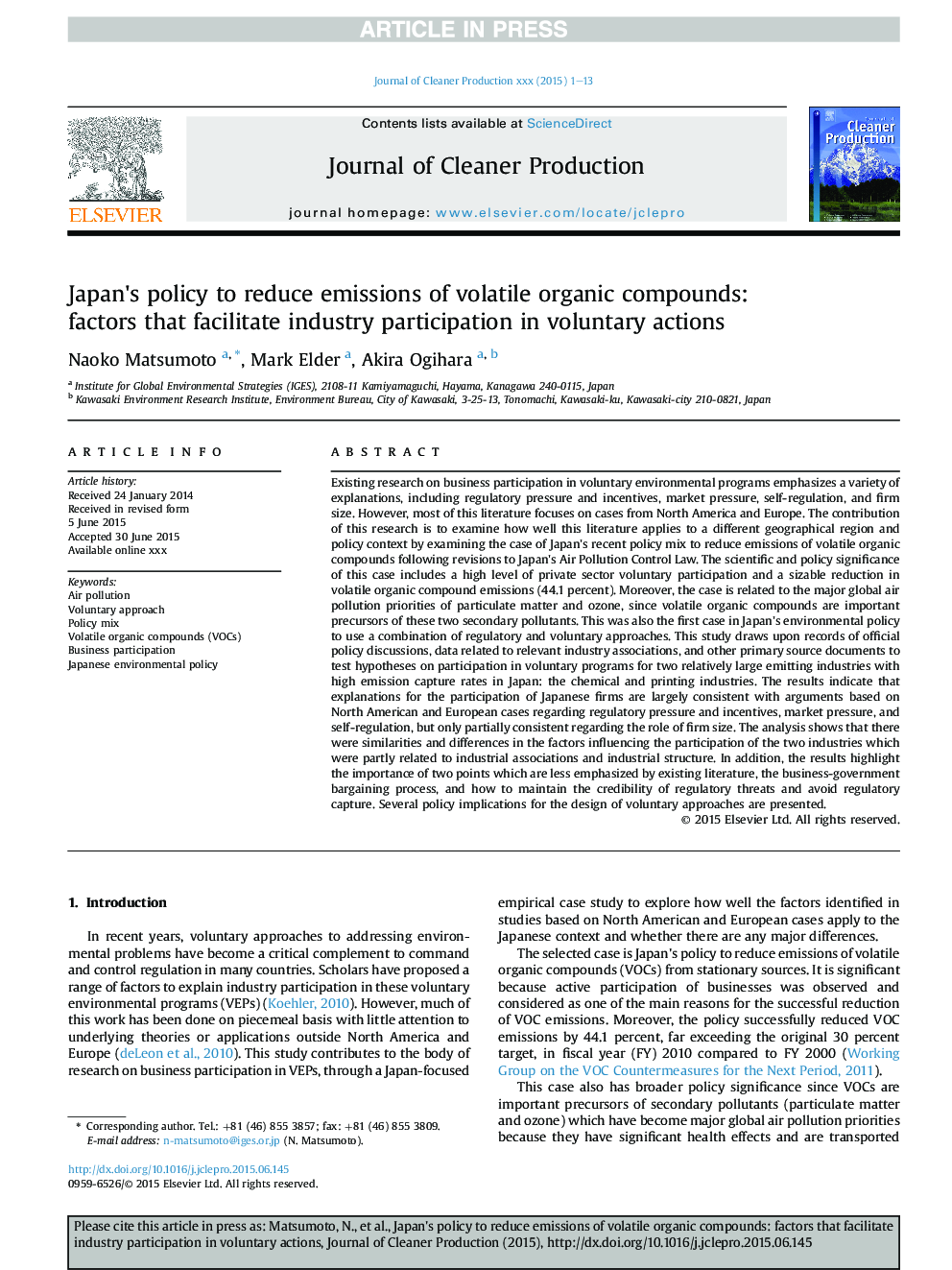| Article ID | Journal | Published Year | Pages | File Type |
|---|---|---|---|---|
| 10688222 | Journal of Cleaner Production | 2015 | 13 Pages |
Abstract
Existing research on business participation in voluntary environmental programs emphasizes a variety of explanations, including regulatory pressure and incentives, market pressure, self-regulation, and firm size. However, most of this literature focuses on cases from North America and Europe. The contribution of this research is to examine how well this literature applies to a different geographical region and policy context by examining the case of Japan's recent policy mix to reduce emissions of volatile organic compounds following revisions to Japan's Air Pollution Control Law. The scientific and policy significance of this case includes a high level of private sector voluntary participation and a sizable reduction in volatile organic compound emissions (44.1 percent). Moreover, the case is related to the major global air pollution priorities of particulate matter and ozone, since volatile organic compounds are important precursors of these two secondary pollutants. This was also the first case in Japan's environmental policy to use a combination of regulatory and voluntary approaches. This study draws upon records of official policy discussions, data related to relevant industry associations, and other primary source documents to test hypotheses on participation in voluntary programs for two relatively large emitting industries with high emission capture rates in Japan: the chemical and printing industries. The results indicate that explanations for the participation of Japanese firms are largely consistent with arguments based on North American and European cases regarding regulatory pressure and incentives, market pressure, and self-regulation, but only partially consistent regarding the role of firm size. The analysis shows that there were similarities and differences in the factors influencing the participation of the two industries which were partly related to industrial associations and industrial structure. In addition, the results highlight the importance of two points which are less emphasized by existing literature, the business-government bargaining process, and how to maintain the credibility of regulatory threats and avoid regulatory capture. Several policy implications for the design of voluntary approaches are presented.
Related Topics
Physical Sciences and Engineering
Energy
Renewable Energy, Sustainability and the Environment
Authors
Naoko Matsumoto, Mark Elder, Akira Ogihara,
